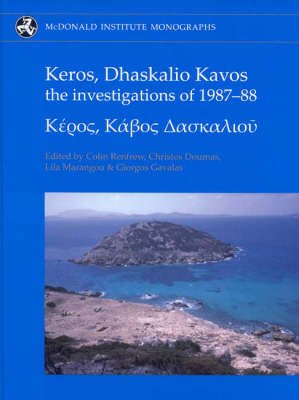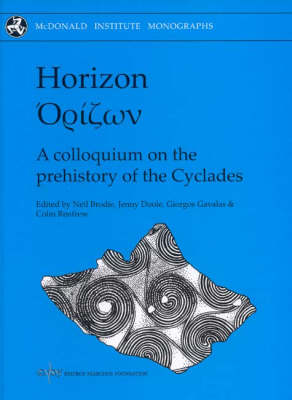McDonald Institute Monographs
3 total works
Keros, Dhaskalio Kavos
by A. Colin Renfrew, Giorgos Gavalas, Christos Doumas, Lila I. Marangou, and Giorgios Gavalas
Published 6 December 2007
The site of Dhaskalio Kavos, on the remote Cycladic island of Keros, was extensively looted in the late 1950s and early 1960s. Investigations starting in1963 then revealed large quantities of fractured marble bowls, broken marble figures and smashed pottery of the Early Cycladic period from around 2500 BC. This report of the subsequent survey and rescue excavations of 1987-88 reveals the extraordinary richness of the site, now confirmed as one of the most prolific in Èlite goods of the entire Aegean early bronze age. Was it an unprecedentedly rich Early Cycladic cemetery, recently wrecked by looters? Or was the damage deliberately produced during early bronze age times in some procedure of ritual breakage and ceremonial deposition? Here the survey of the site and the rescue excavations undertaken within the looted area are documented in detail, with a full account of the finds. Alternative explanations for this extraordinary deposit are explored. What has been termed 'the Keros Enigma', in the light of the finds at the site, can now be reconsidered with the full documentation which this volume offers.
Simulations, Genetics and Human Prehistory
by Peter Forster and A. Colin Renfrew
Published 31 July 2008
Data from molecular genetics have changed our views on the origin, spread and timescale of our species across this planet. But how can we reveal more detail about the demography of ancient human populations? For example, is it possible to determine when and how many people arrived at a certain continent, and which route they took from a choice of geographically plausible options? One of the most promising tools for such investigation is computer simulation incorporating various demographic scenarios. The simulation outcomes must be evaluated by teams with archaeological expertise, since archaeological evidence is generally the best evidence currently available on the population histories of geographical regions. This book is a summary of the landmark conference held in Cambridge in 2005, where specialists in simulations and molecular genetics as well as archaeologists came together to present and evaluate the state of the art, and to discuss future possibilities.
Horizon
by Giorgos Gavalas, A. Colin Renfrew, Jennifer Doole, Giorgios Gavalas, and Colin Renfrew
Published 30 April 2008
The Cycladic Islands of Greece played a central role in Aegean prehistory, and many new discoveries have been made in recent years at sites ranging in date from the Mesolithic period to the end of the Bronze Age. In the well-illustrated chapters of this book, based on the recent conference held at the McDonald Institute for Archaeological Research in Cambridge, international scholars including leading Greek archaeologists offer new information about recent developments, many arising from hitherto unpublished excavations. The book contains novel theoretical insights into the workings of culture process in the prehistoric cultures of the islands. It will be an indispensable resource for students and scholars interested in the prehistory of the Aegean and in the contributions made to its development by the prehistoric inhabitants of the Cyclades.


